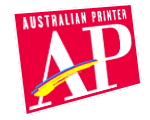High speed inkjet solutions developer Memjet has opened the doors to its hitherto secretive Sydney R+D facility, as the company moves into commercialising its $500m investment through oem deals with companies including Oce and Fuji Xerox.
Initially created for the wide format, labels and packaging markets the company is aiming to make a full on assault on the commercial offset market when the third generation heads are released in about four years time.
Company president Len Lauer says, “Companies like Heidelberg, manroland, HP and even Benny Landa could become Memjet customers. The current offset market is ripe for Memjet technology, when we have the mechanical heads in 2016.”
Lauer says, “Our current target market has a value of $250bn, however with offset that rises to $800bn. We don’t anticipate working with long run offset, but for everything below that Memjet will do the job.”
The Ryde centre houses nearly 300 staff, half of whom have Masters or PhDs, and where for the best part of the past decade they have been working on the radical new technology. They have registered an amazing 5000 patents in that time, more than Apple or Google.
Memjet has developed a rapid fire inkjet printing technology which the company says will take printing to new levels of productivity. I saw an A0 sized sheet being printed inkjet in four seconds, a tiny fraction of the time it would take on a conventional inkjet printer. The quality of the type was good, even down to three or four point. The quality of the image I saw could not be described as photo quality.
Just before drupa the stoush between Memjet’s lead researcher Kia Silverbrok and the main US investor Geoge Kaiser was resolved, with the investor taking full control. Kia Silverbrook is no longer involved in the business.
At drupa Memjet was shown on both the Canon/Oce and Fuji Xerox booths, with both companies looking to supply Memjet enabled print technology by the end of the year. In the US Xante has also signed up as a reseller as has a Chinese company for its domestic market.
Lauer told Australian printer that about ‘75 per cent of Memjet revenue is expected to come from the commercial print market, with 25 per cent from the office products sector.’
The current first generation heads print at 1600dpi resolution out of 70,000 nozzle print heads. Leaur says Memjet is now working on second generation heads, with third generation also under development. These heads, mechanical rather than thermal, are expected to be launched in about four years time, and will signal a full on assault on the offset print market.


 Andrew Tribute
Andrew Tribute














